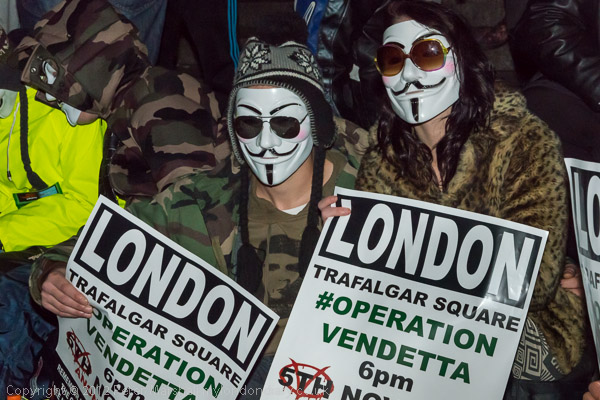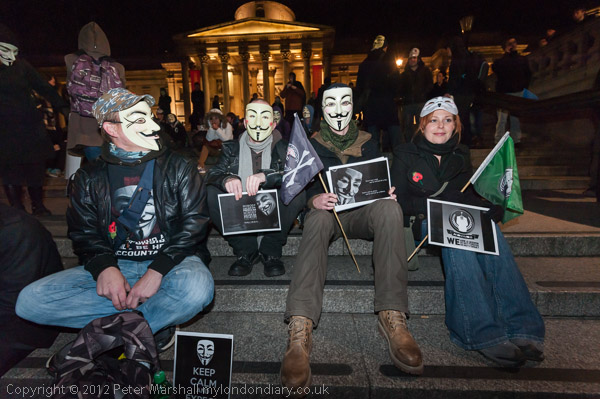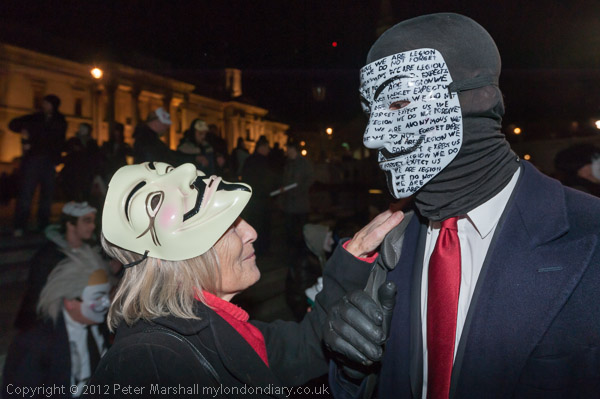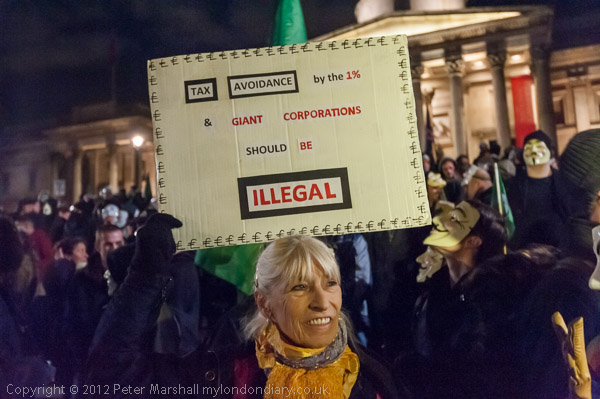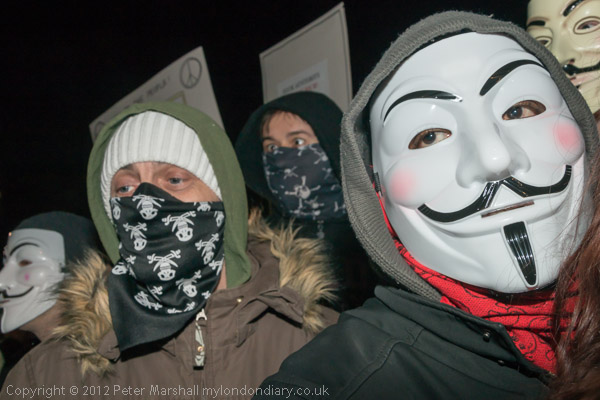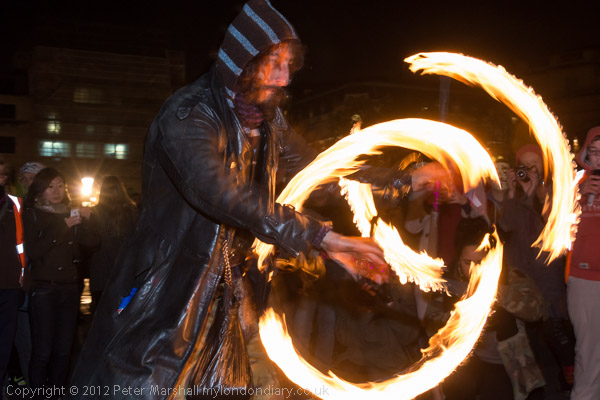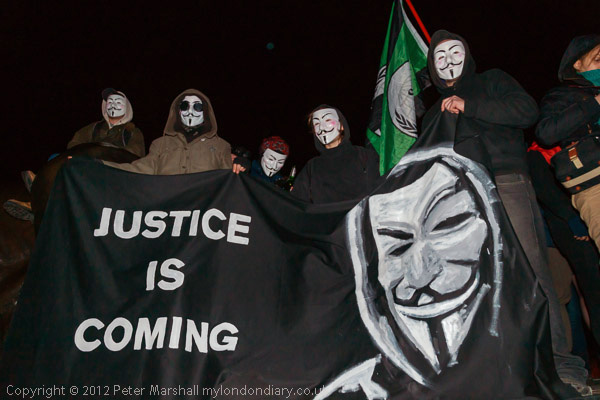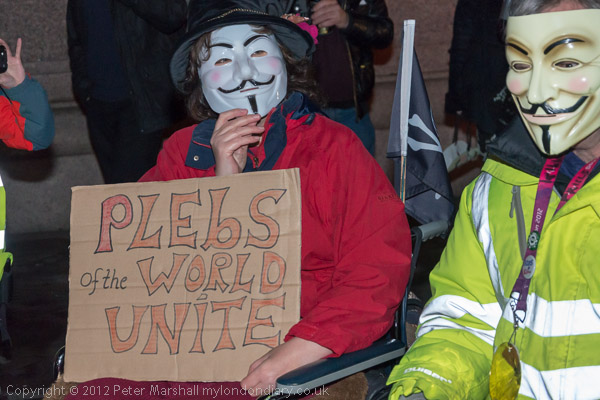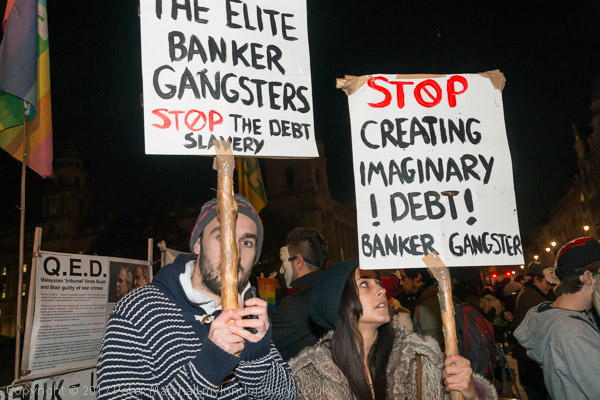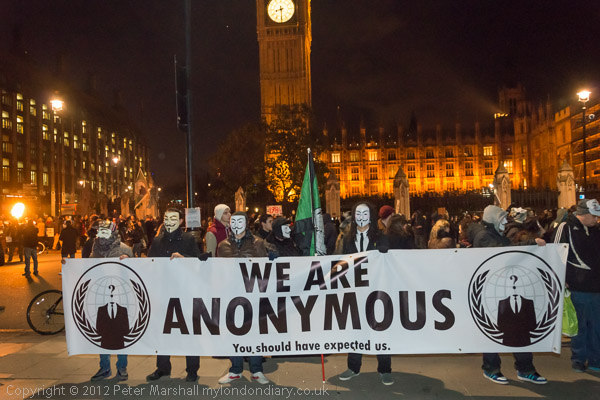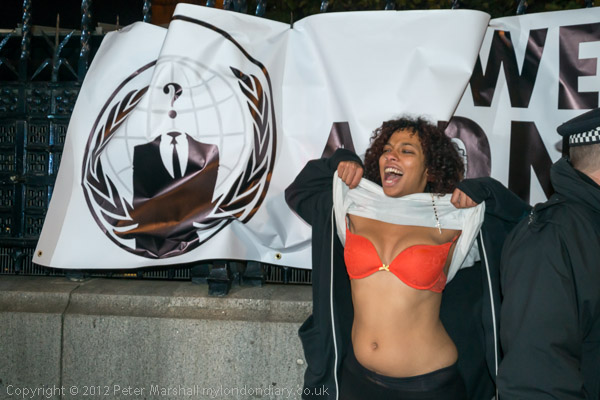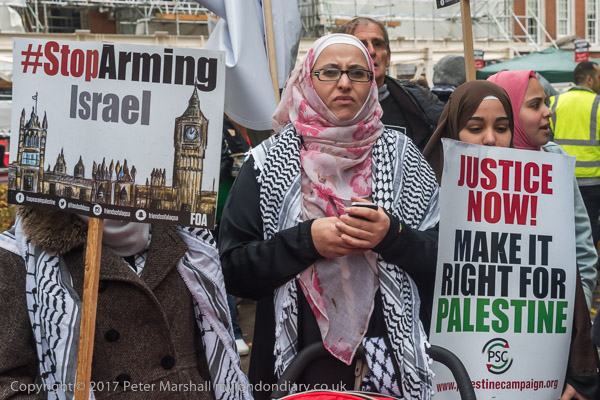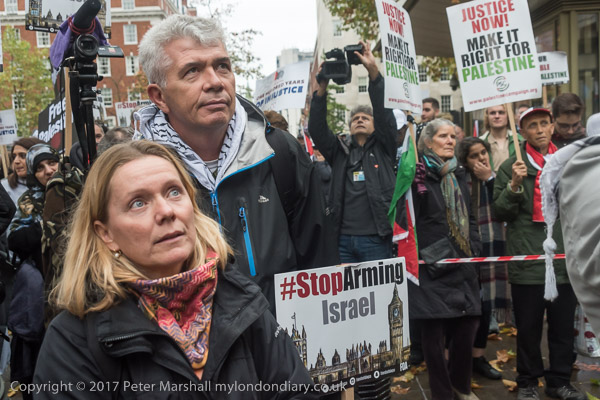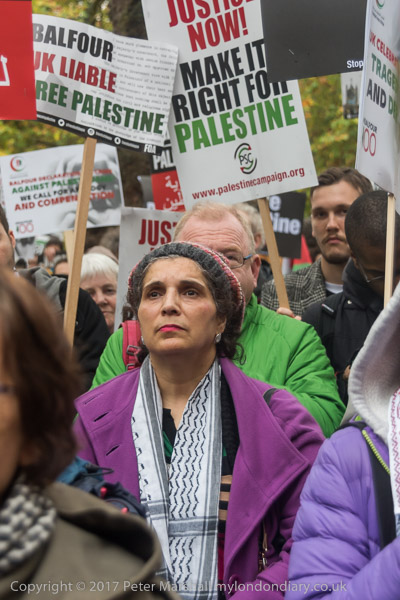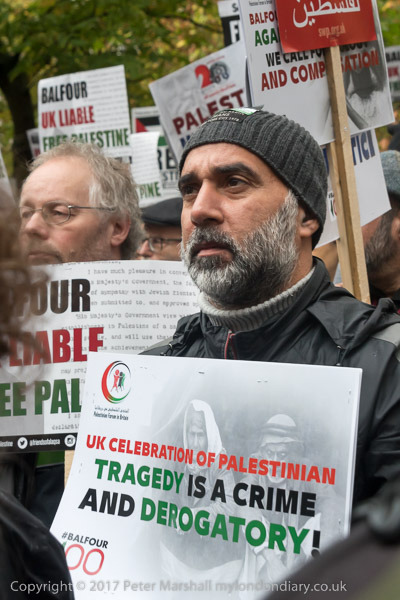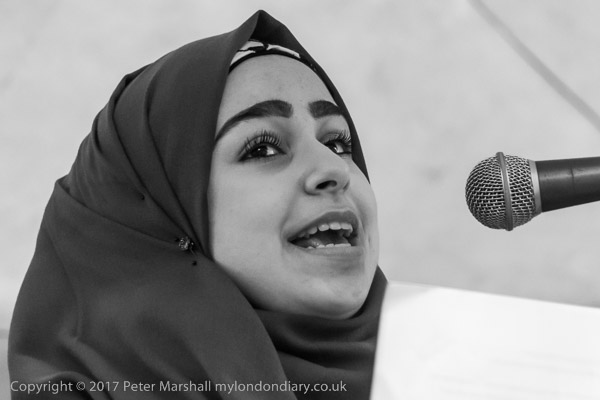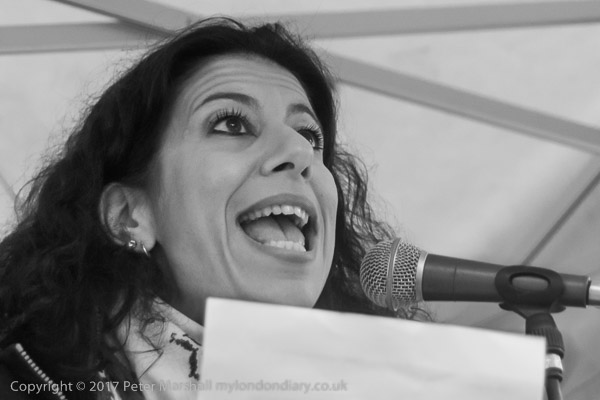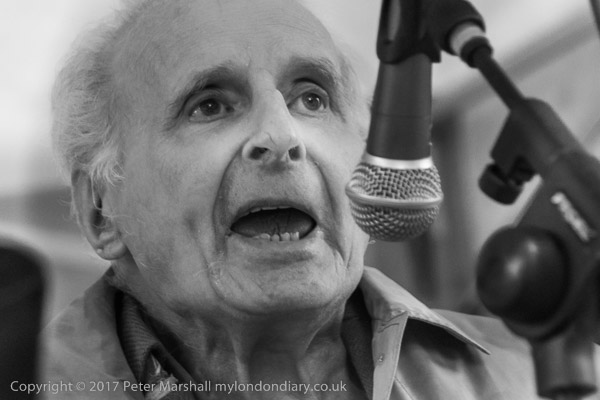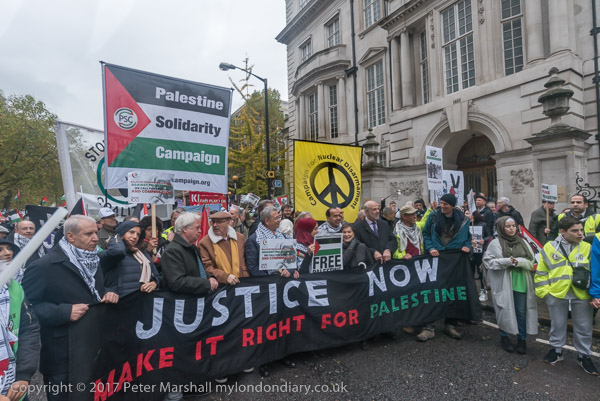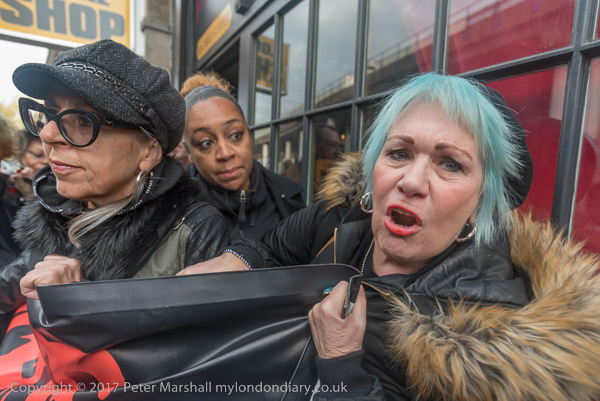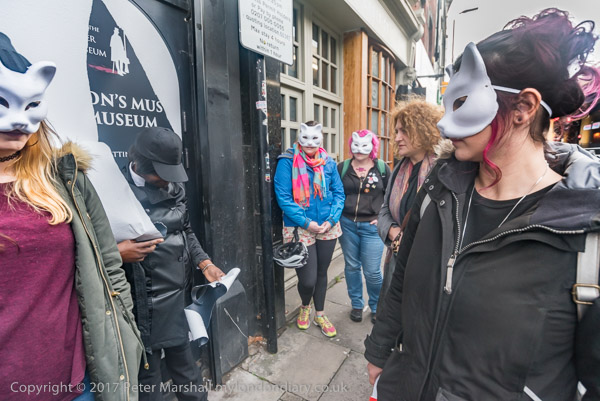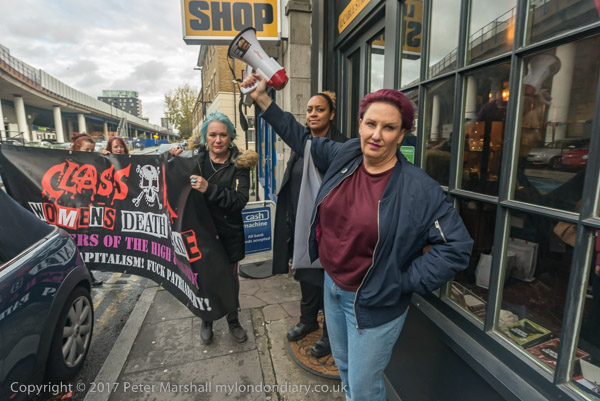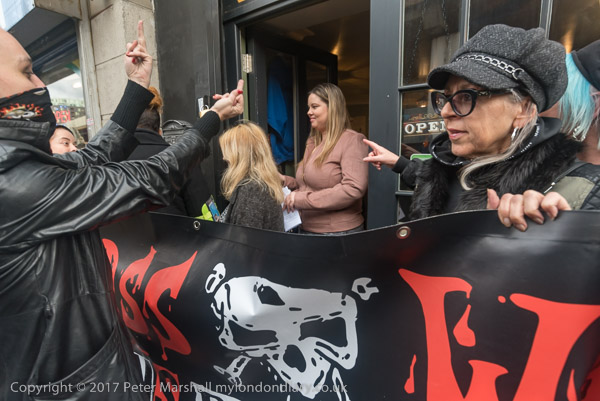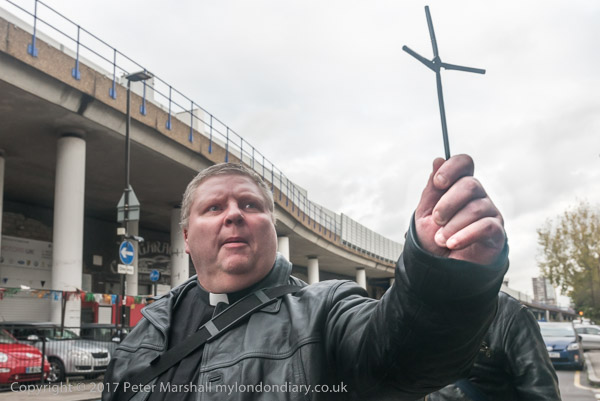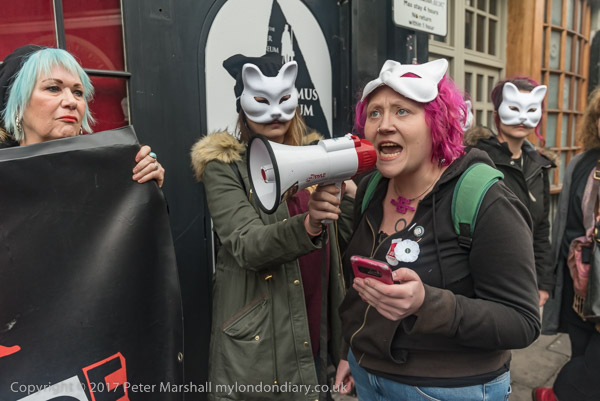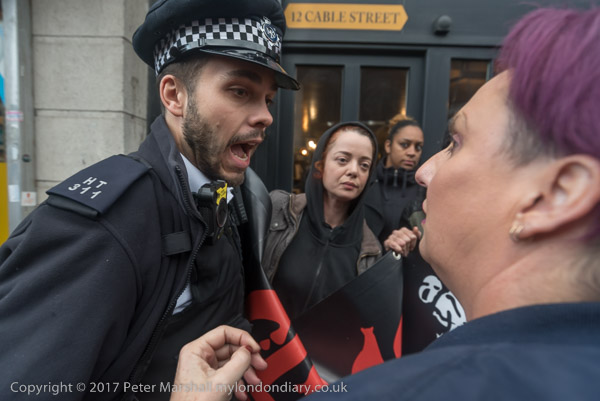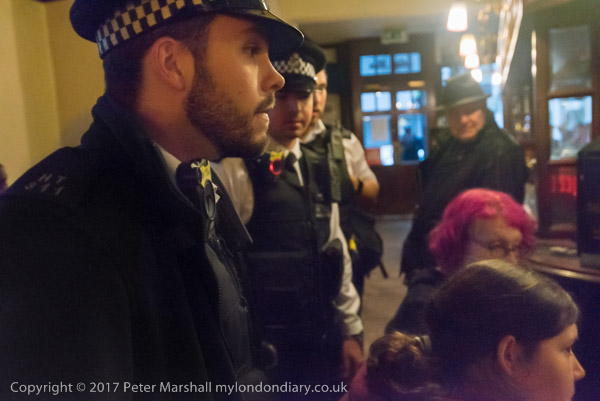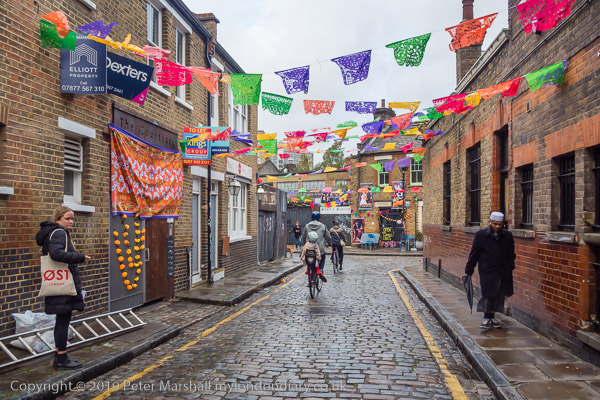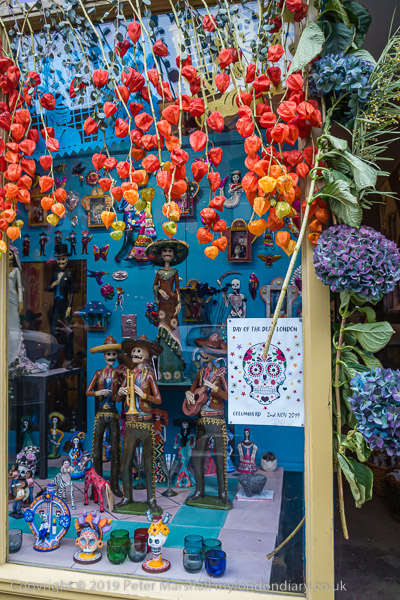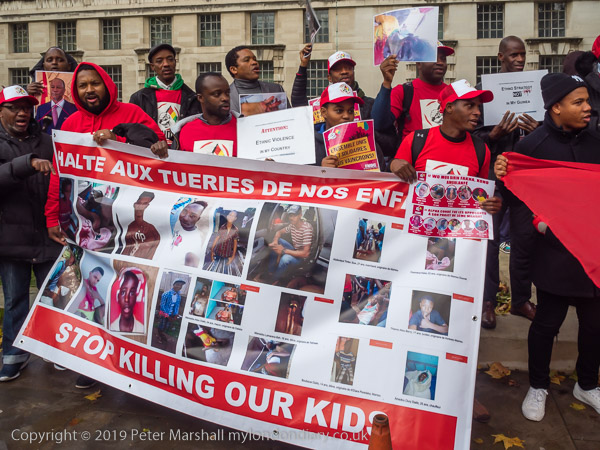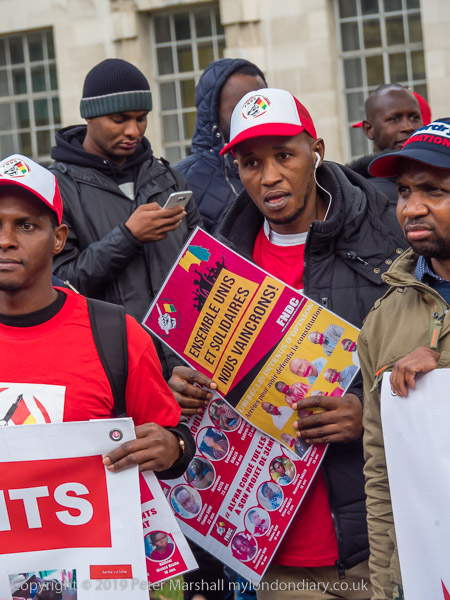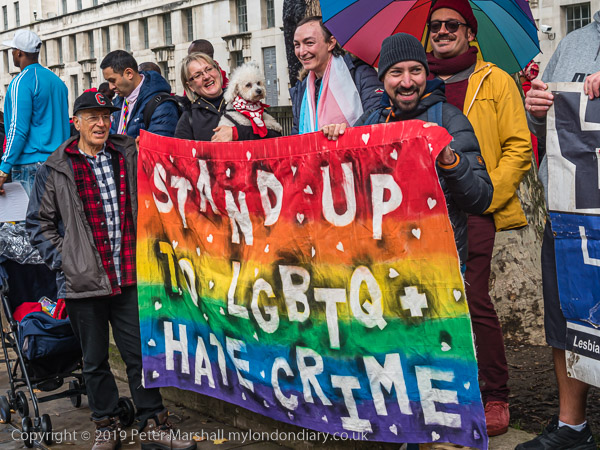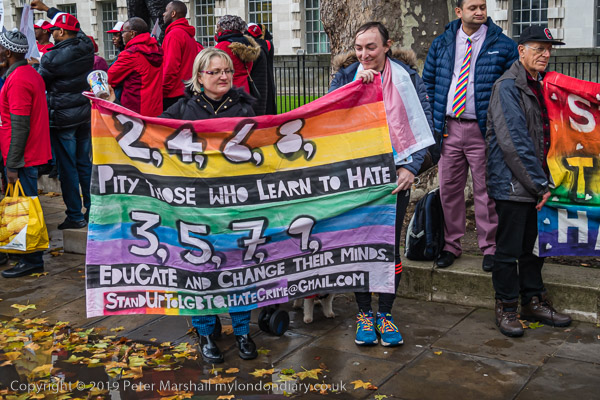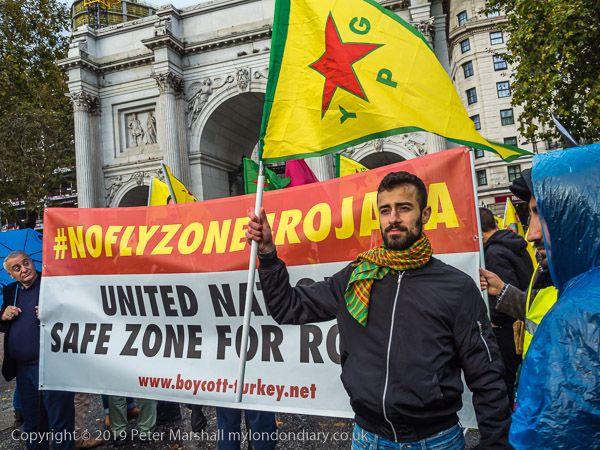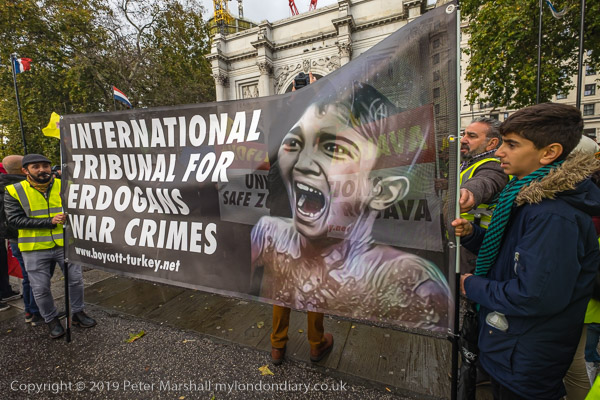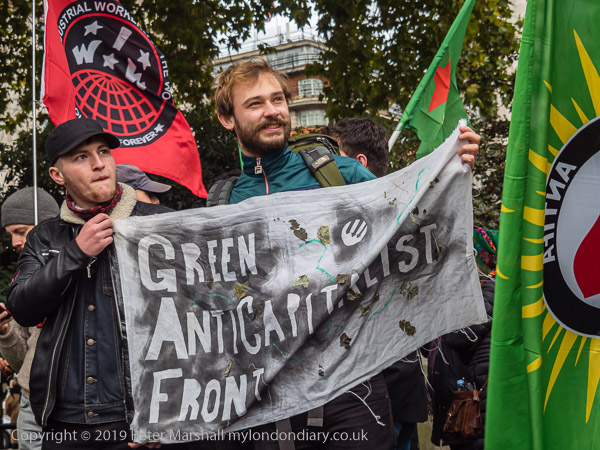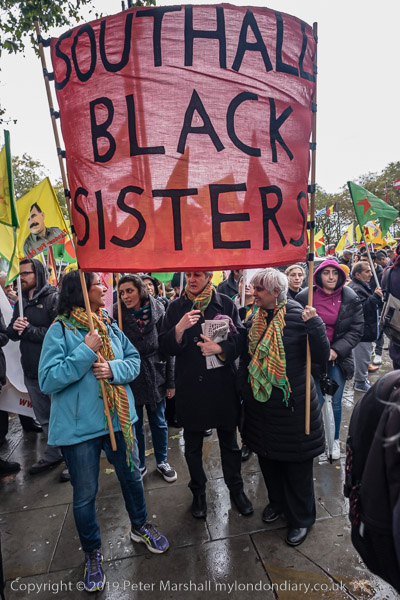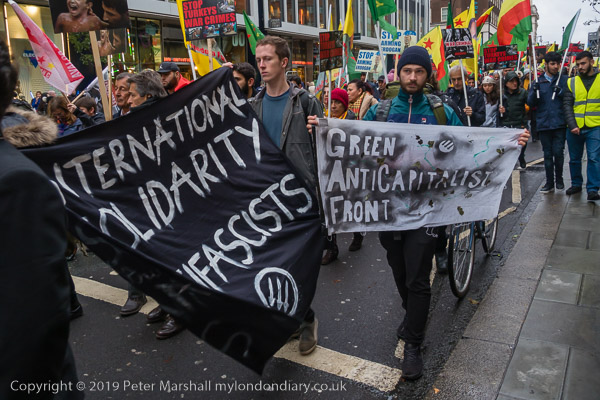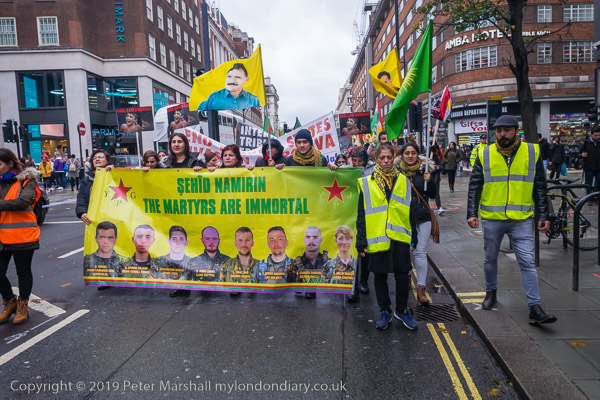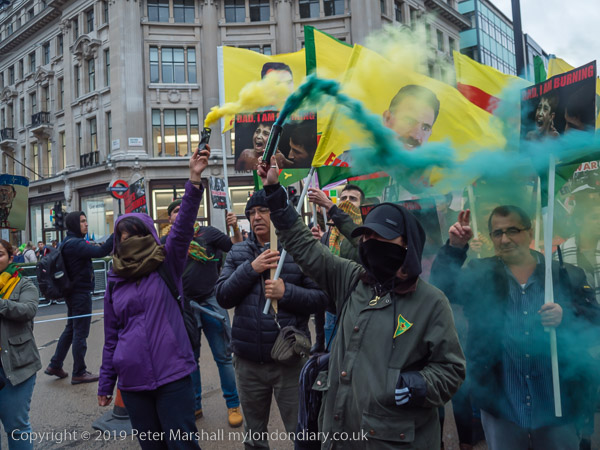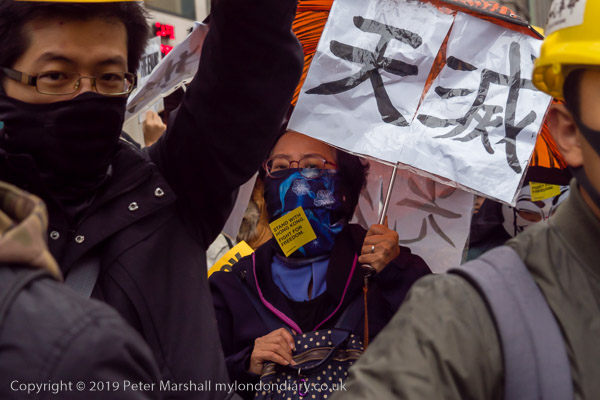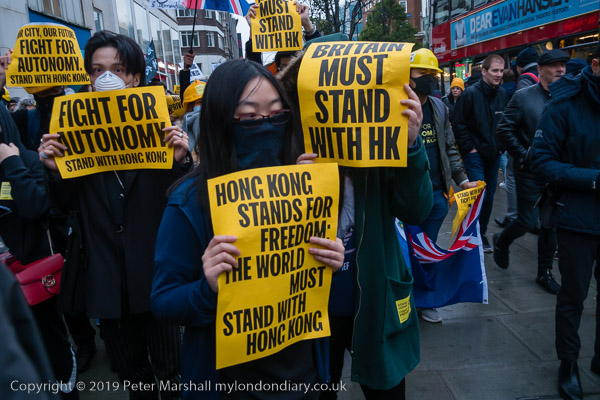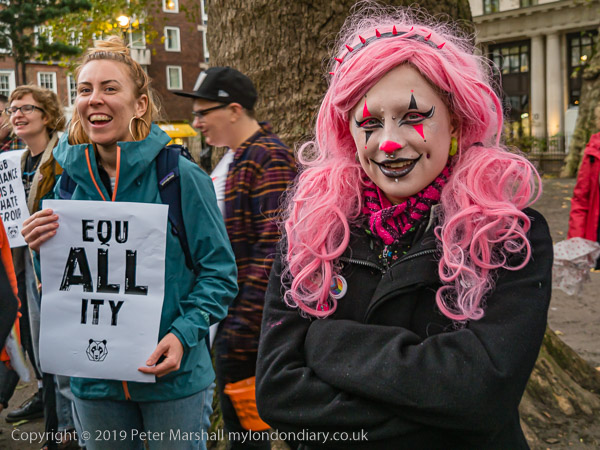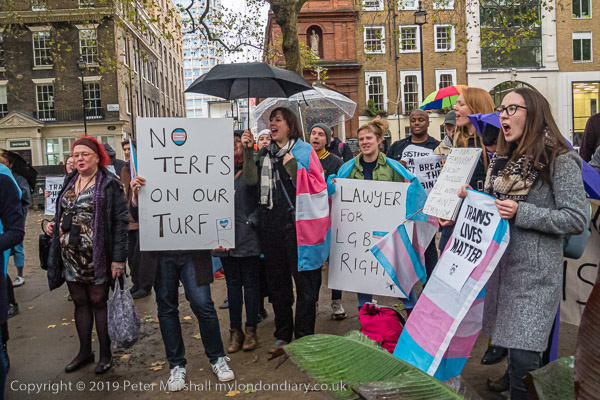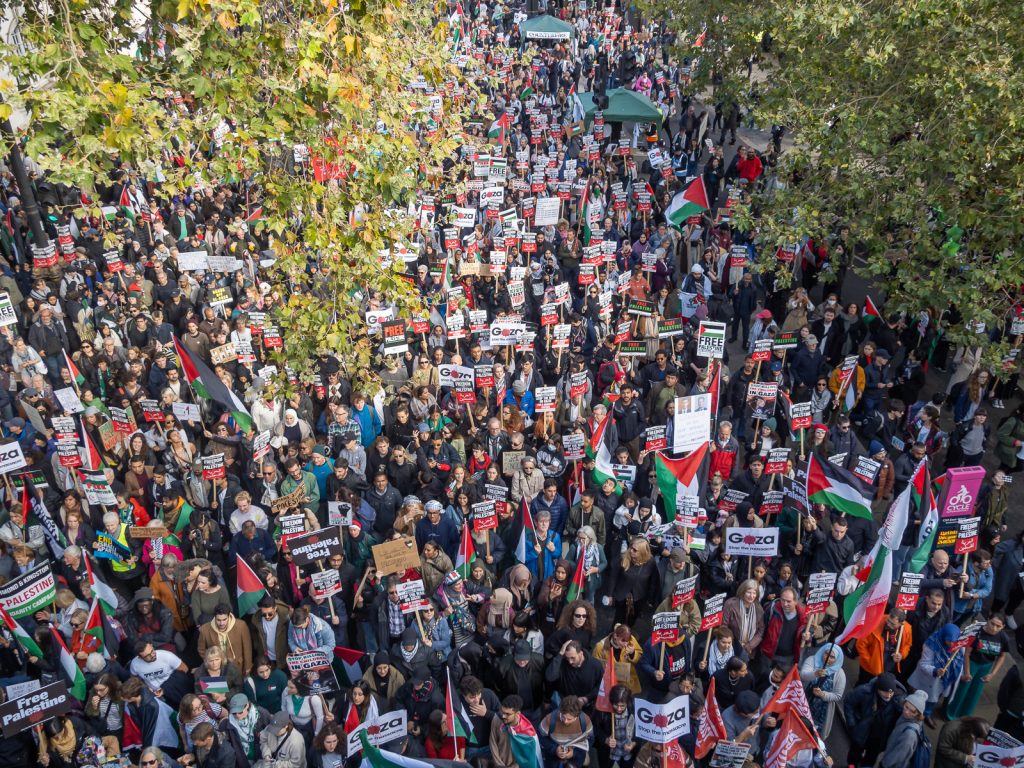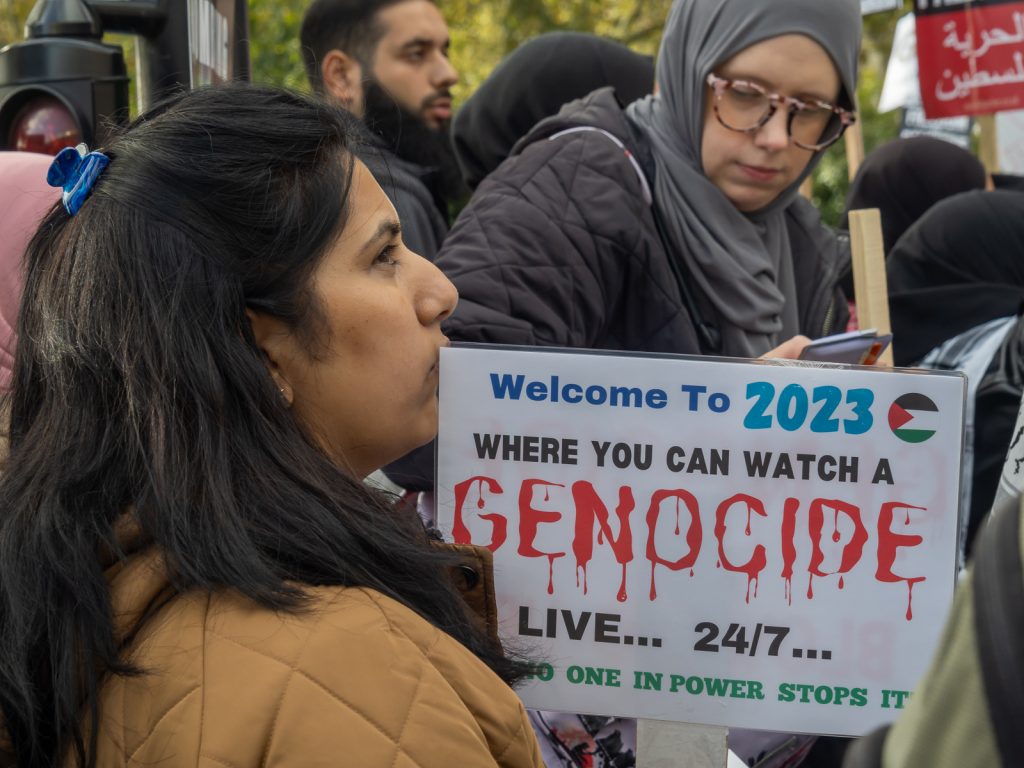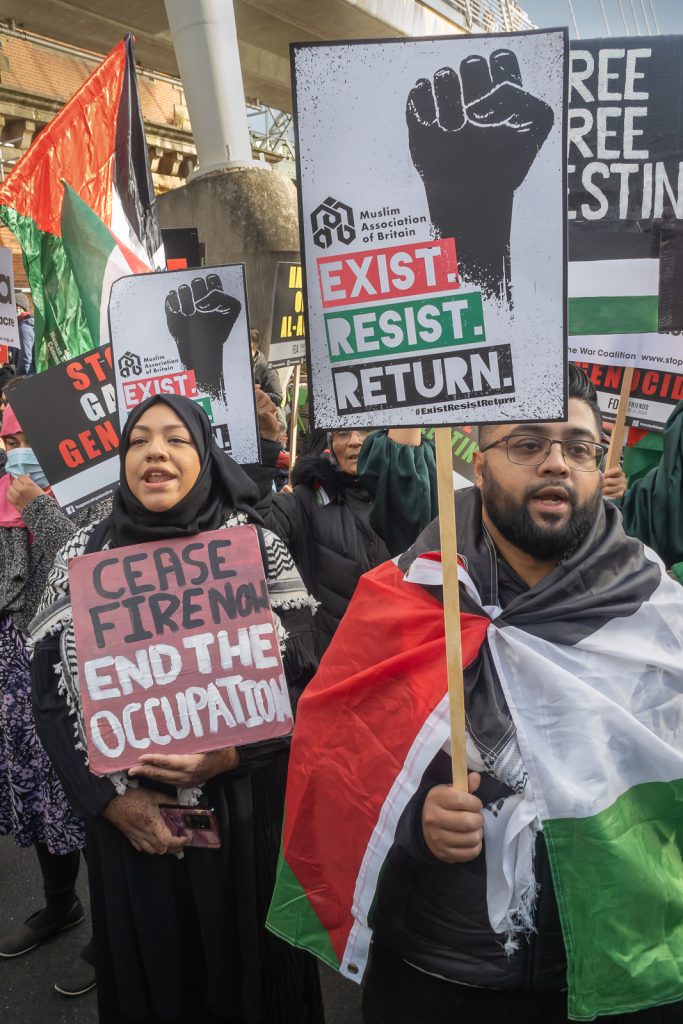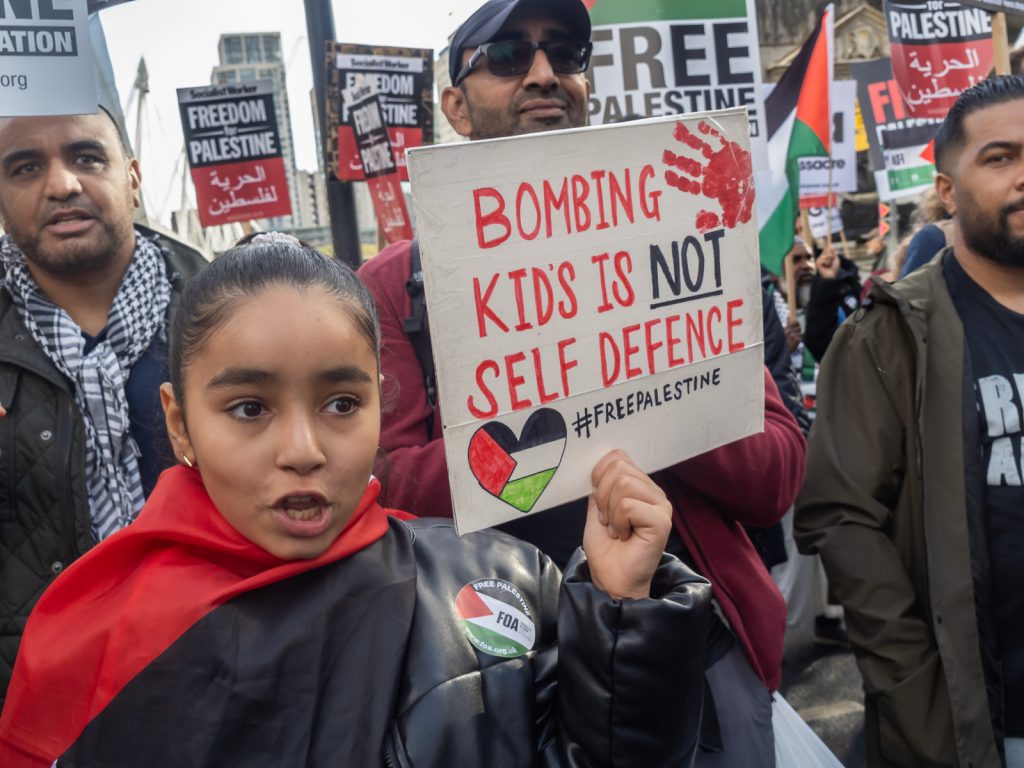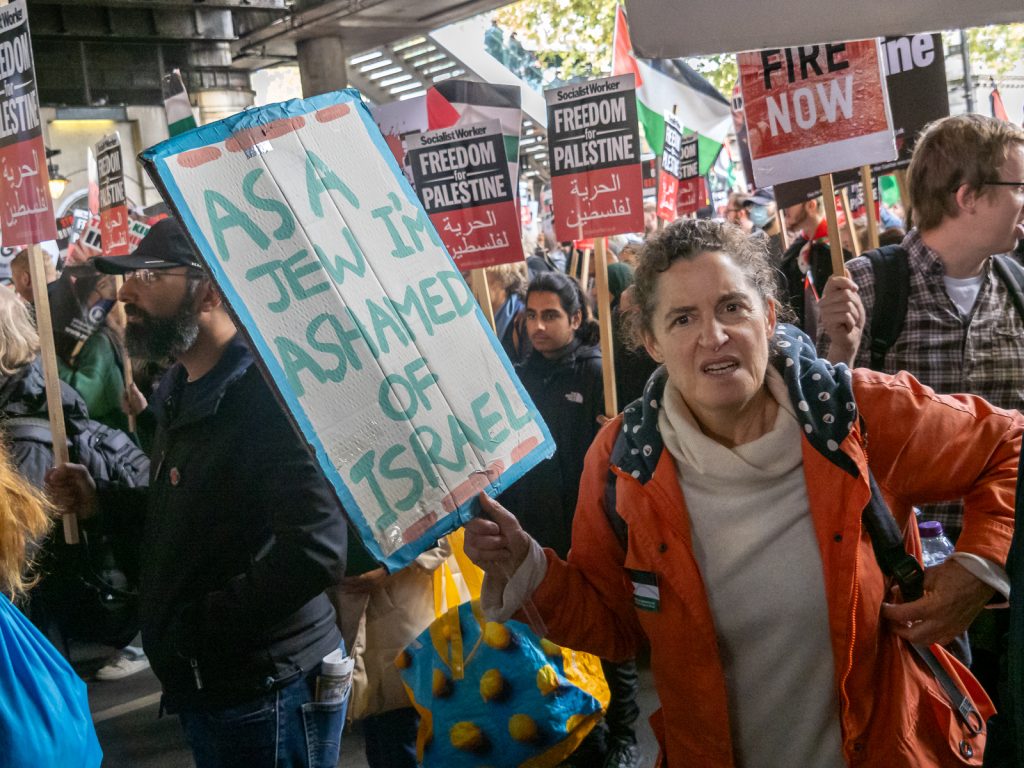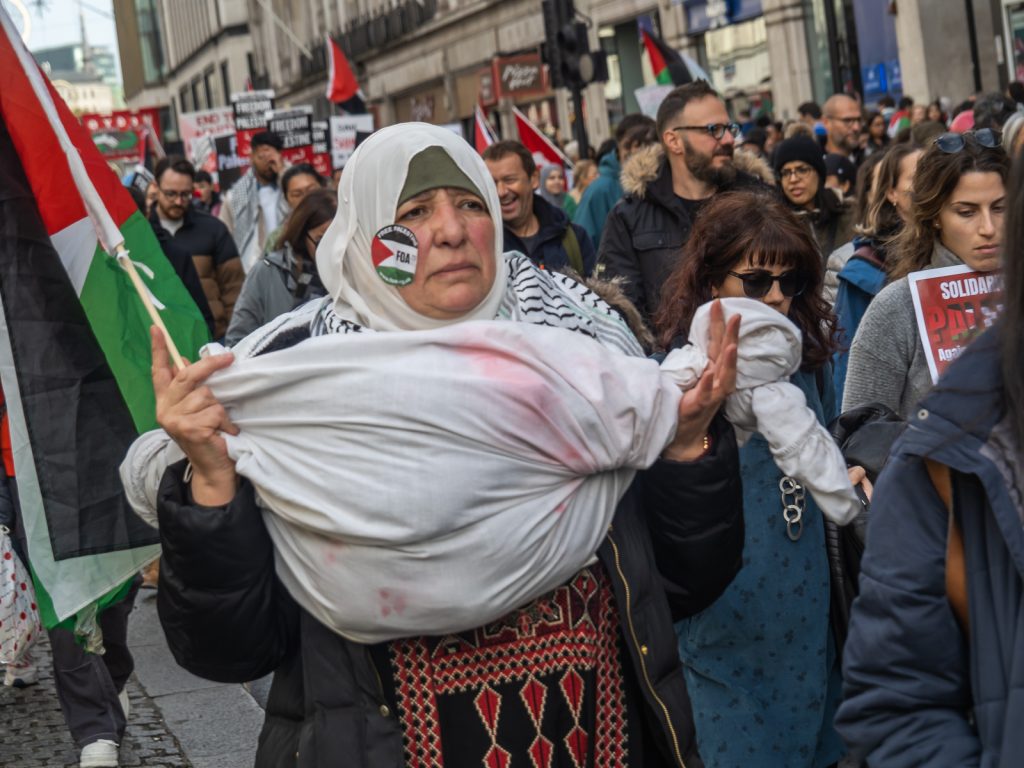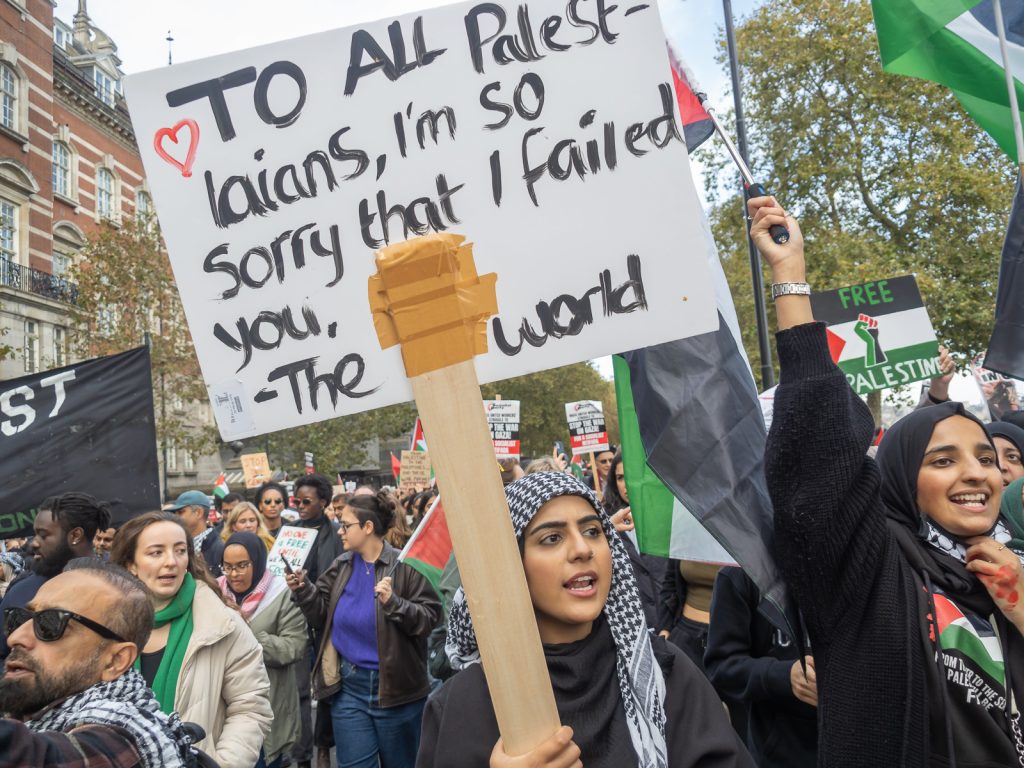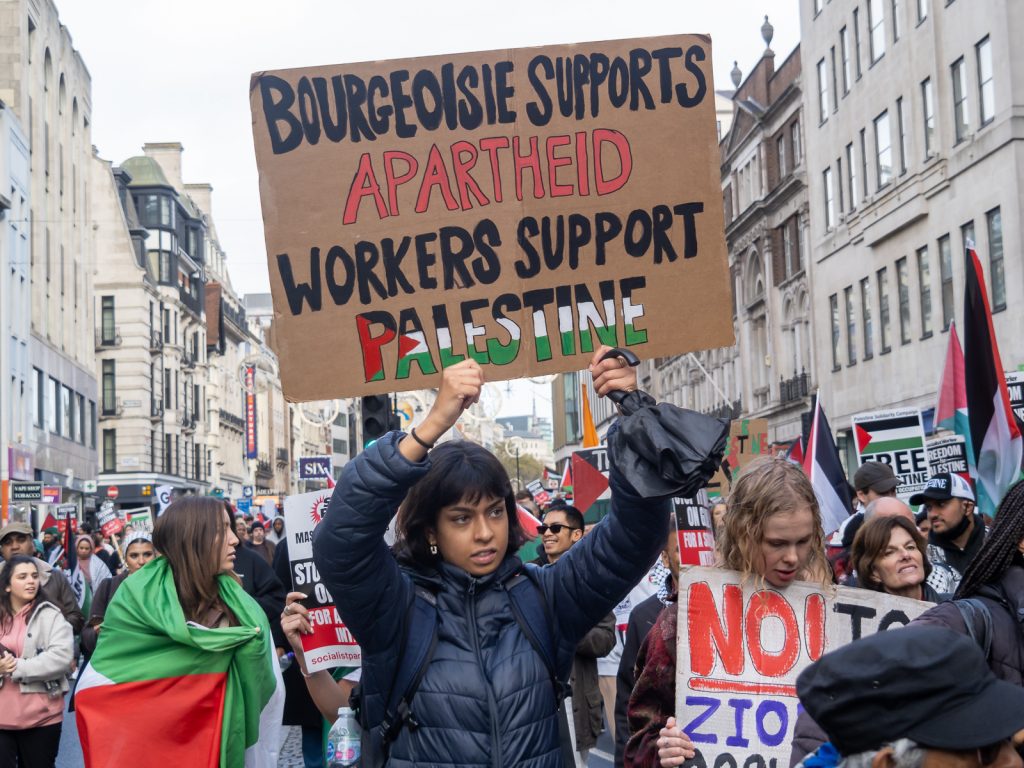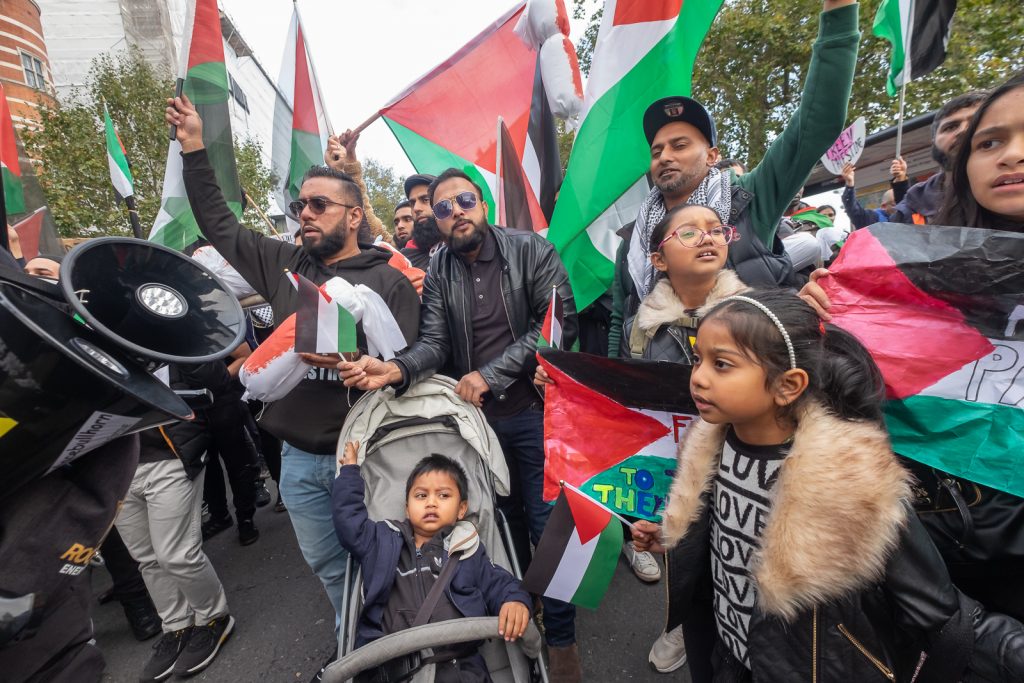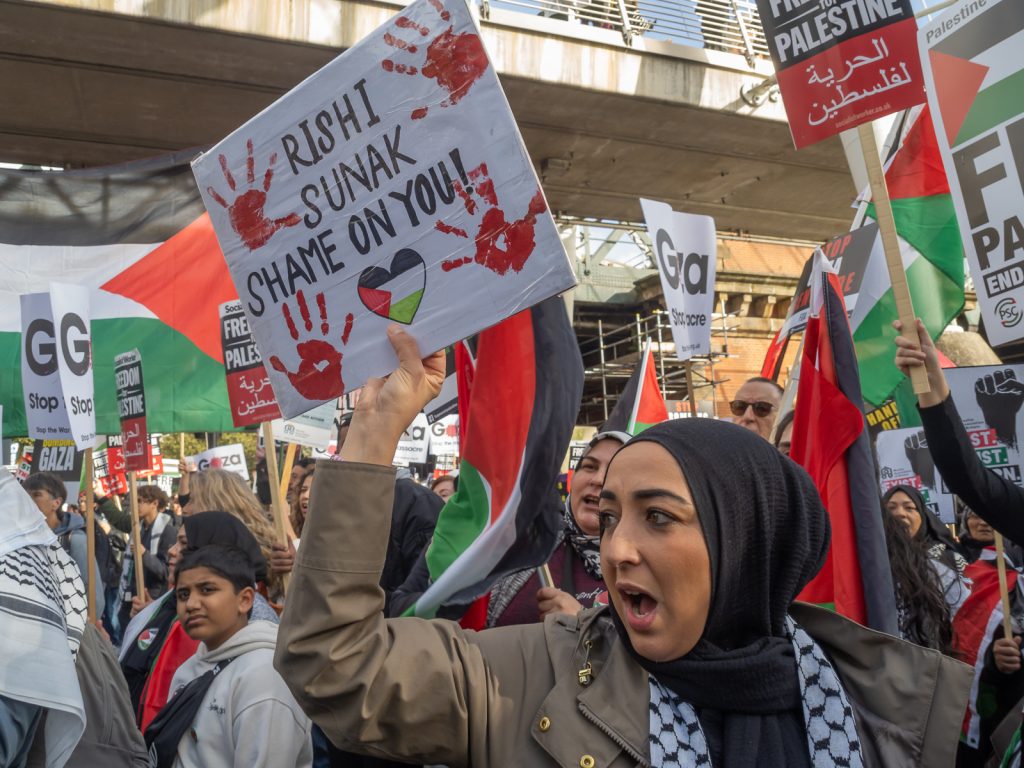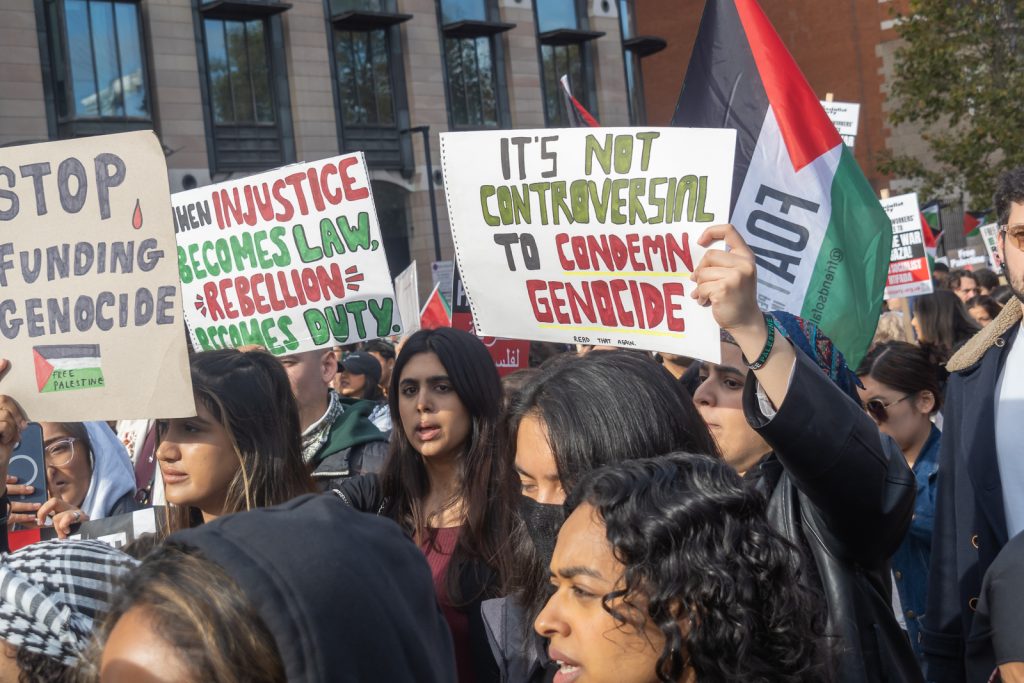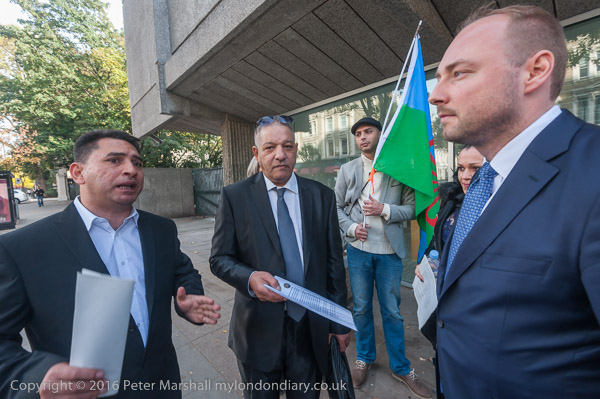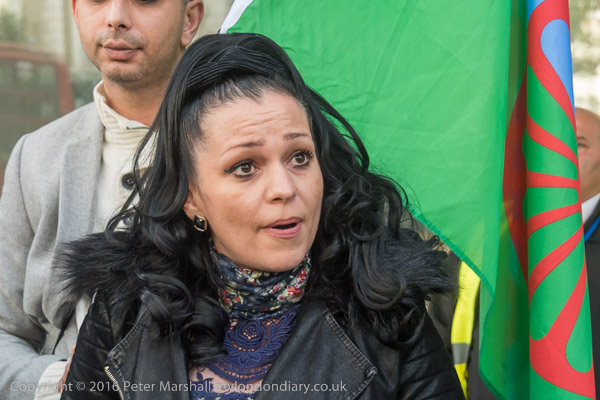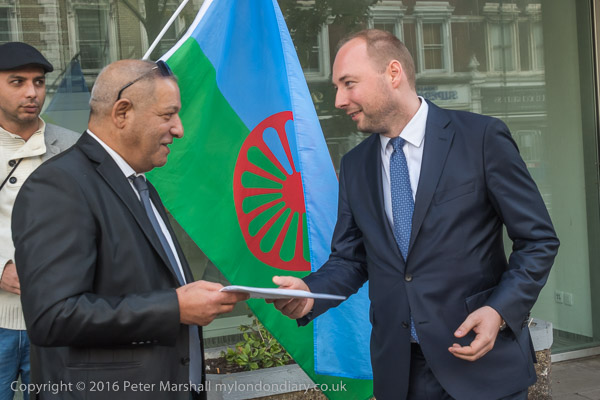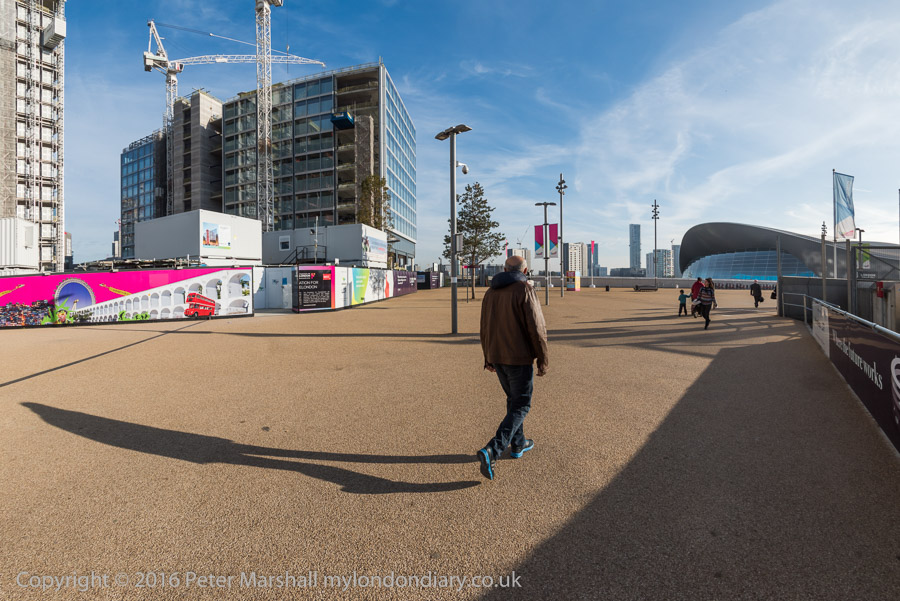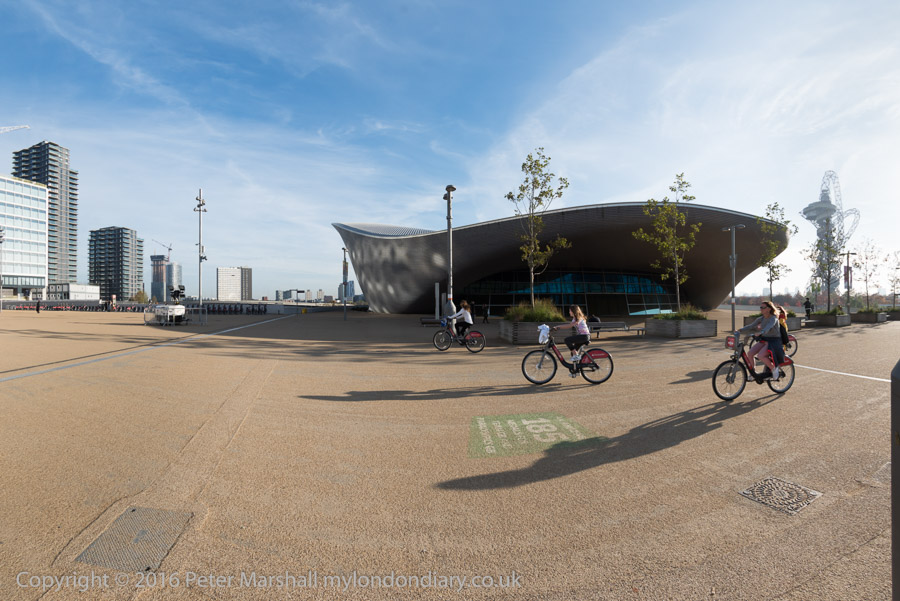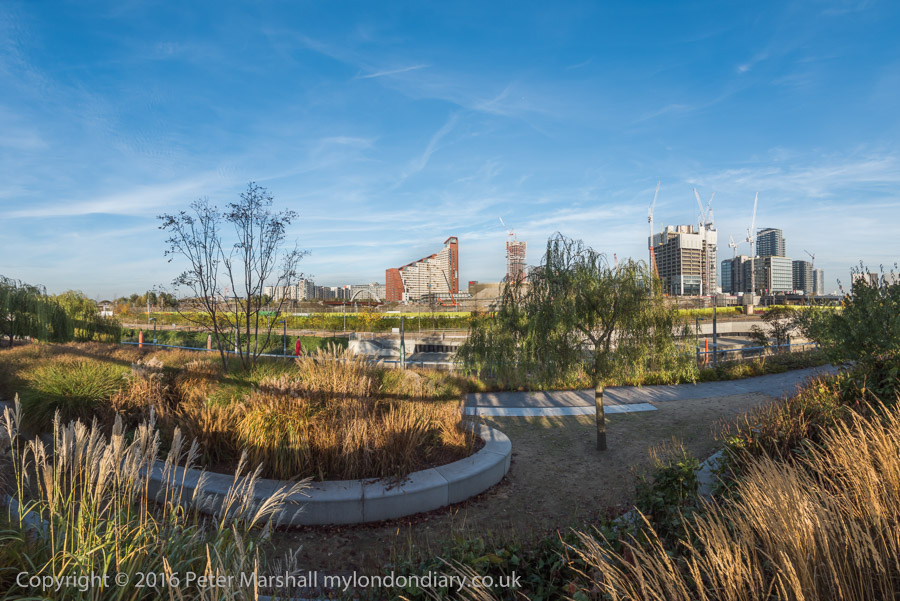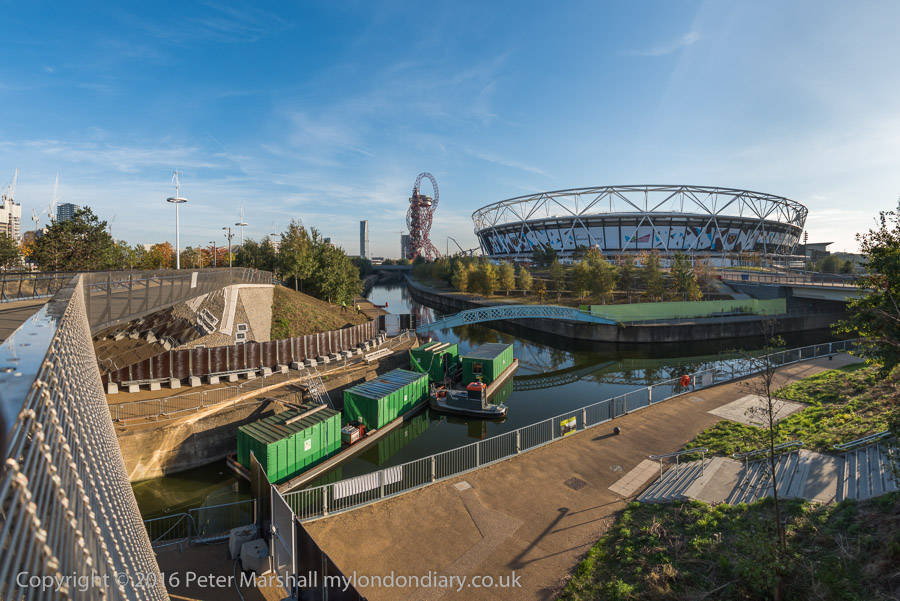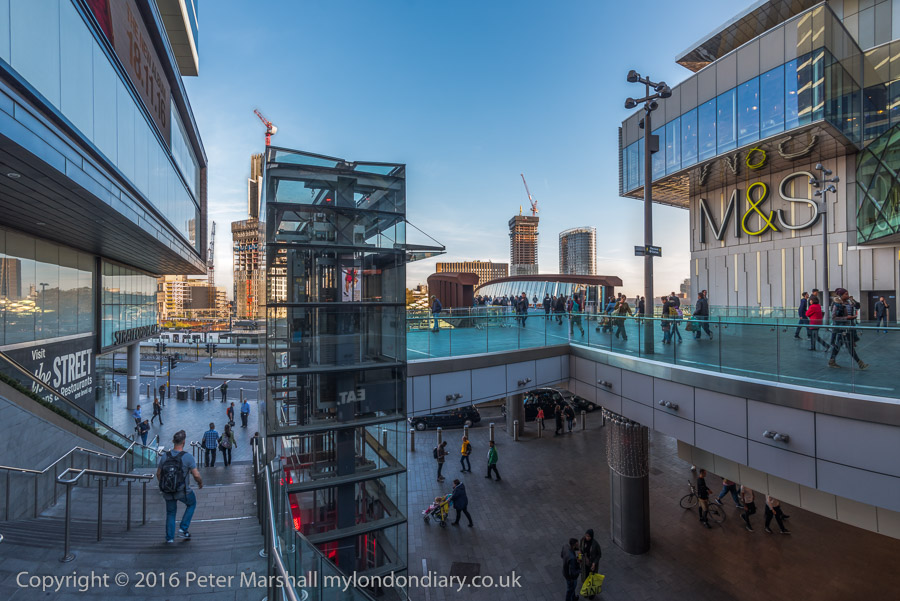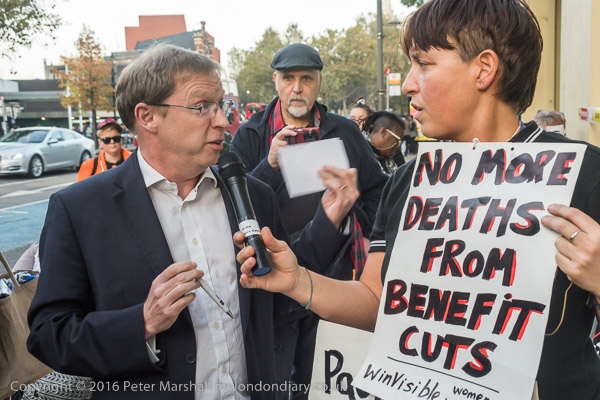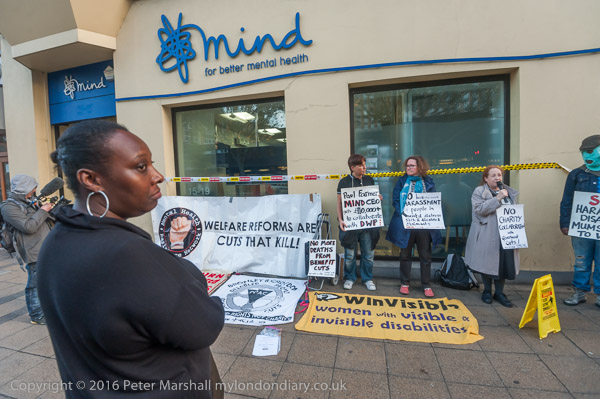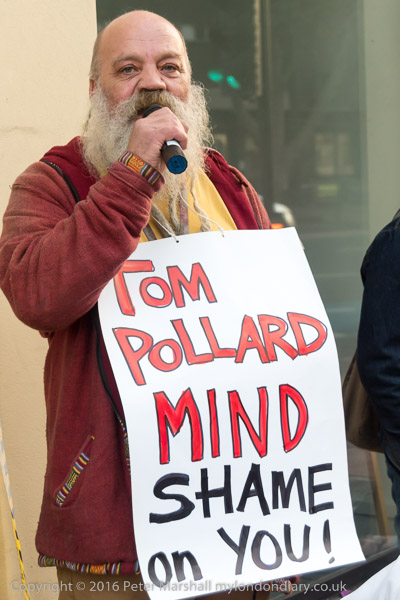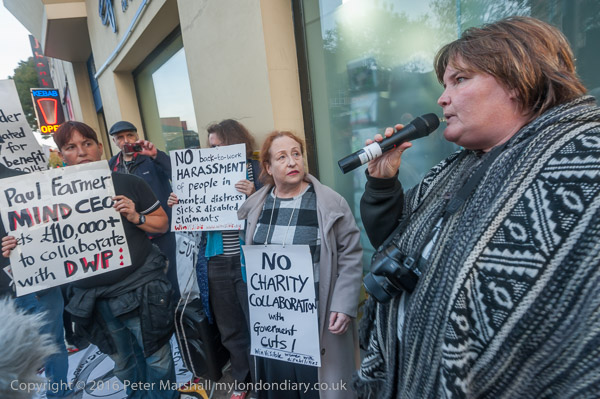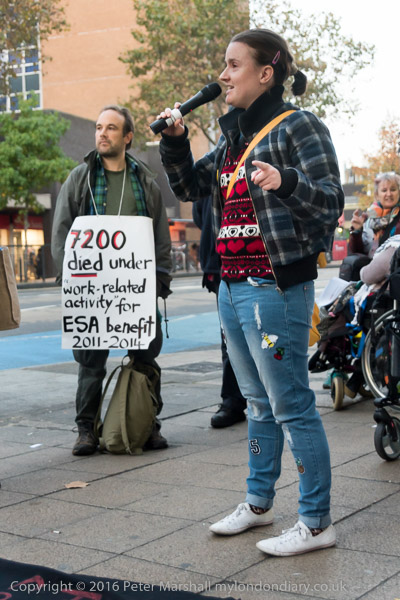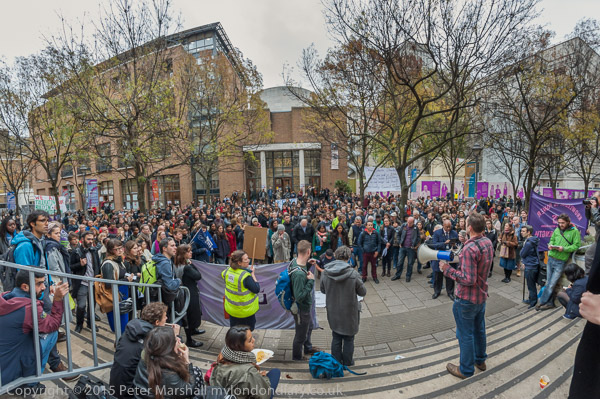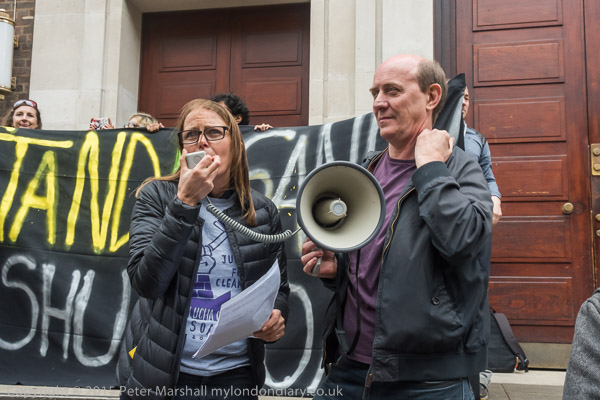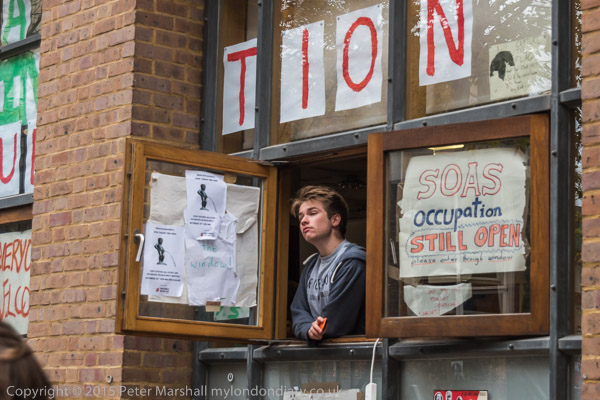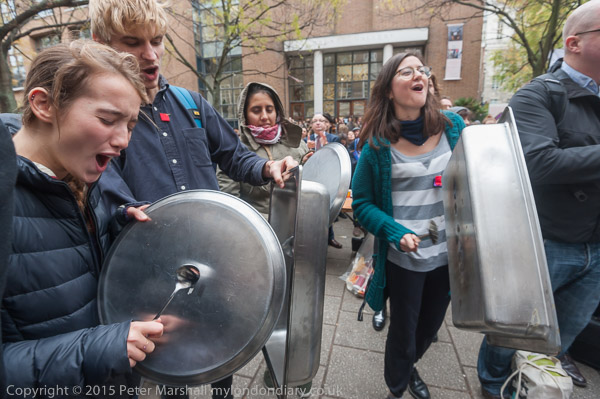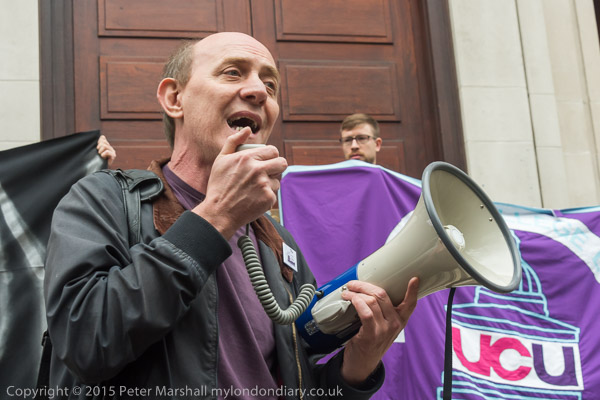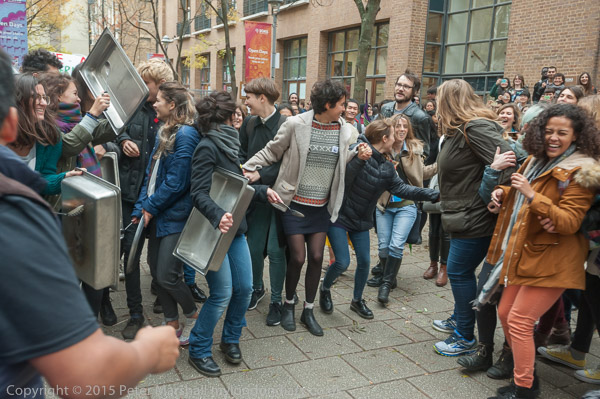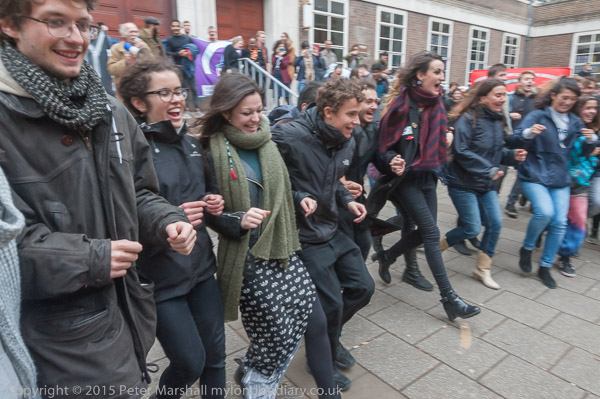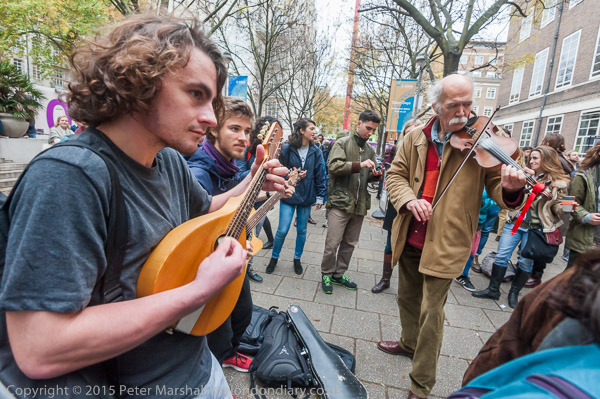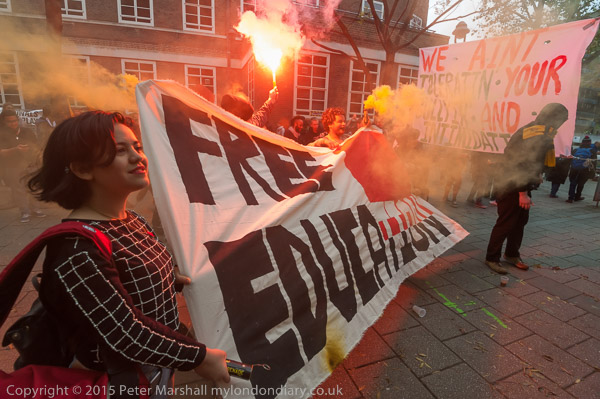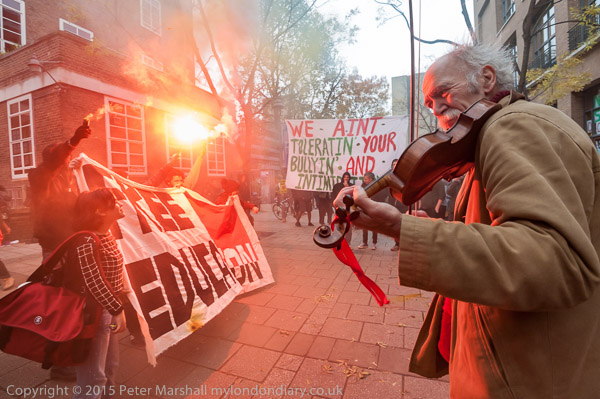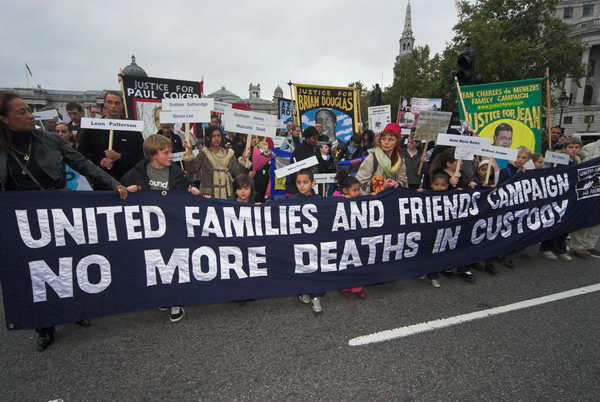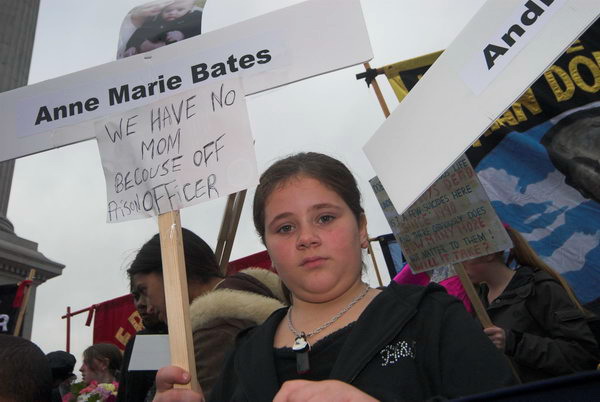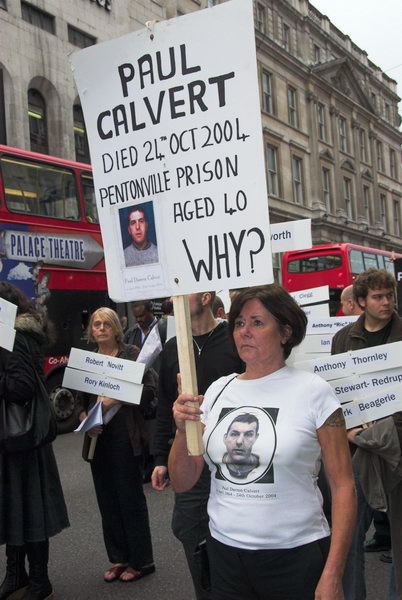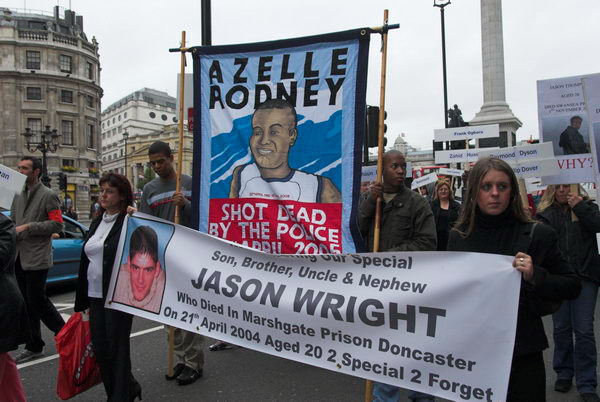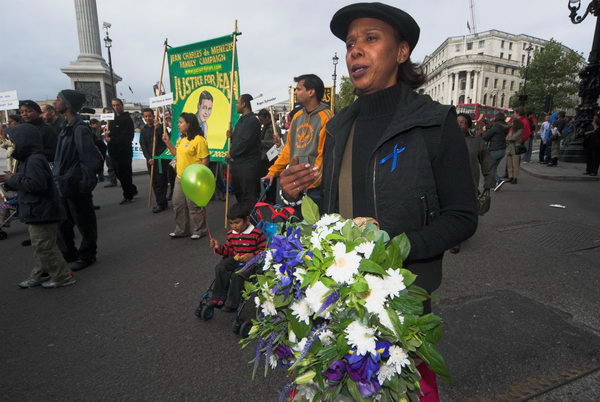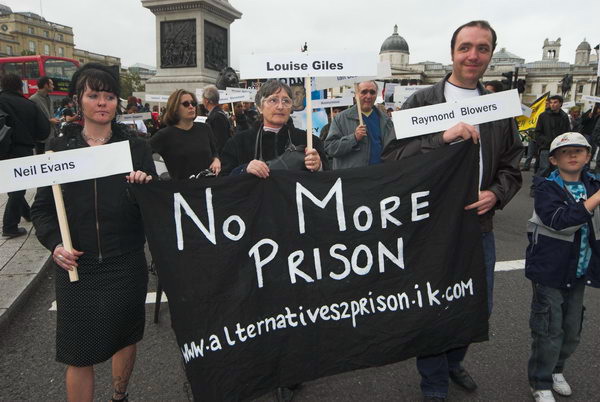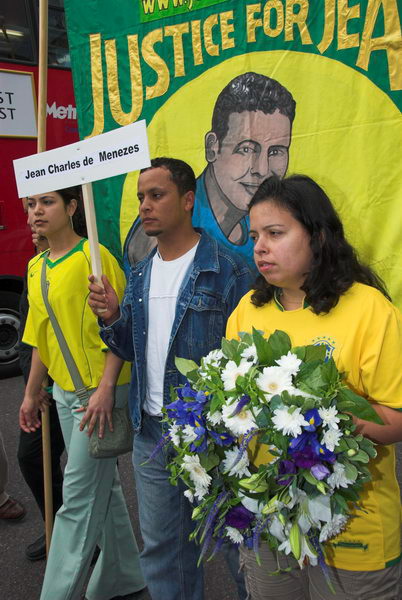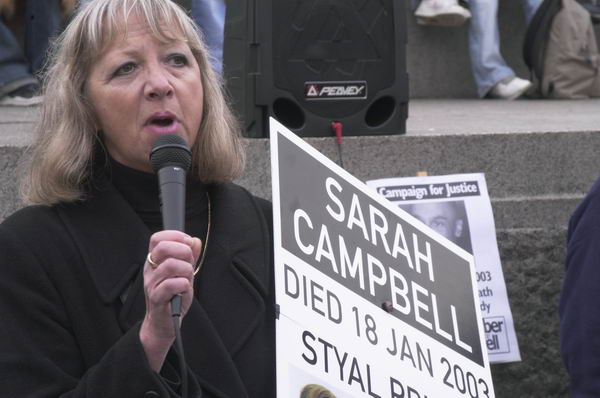Immigration Deaths and US Truth & Justice After a protest at Harmondsworth Detention Centre following the death of a detainee I travelled into central London to cover a protest at the US Embassy in Grosvenor Square on the eve of US Elections.
Noisy Demo after 17th Immigration Death – Harmondsworth Detention Centre
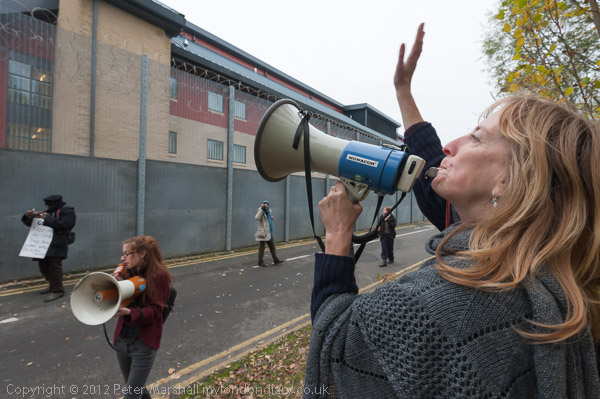
Campaigners from the All African Women’s Group and others demonstrated noisily at the Harmondsworth Immigration Detention Centre as the Prisons and Probation Ombudsman paid a visit following the death a week ago of Prince Kwabena Fosu, a Ghanian who died after ‘restraint’ by GEO Group staff.
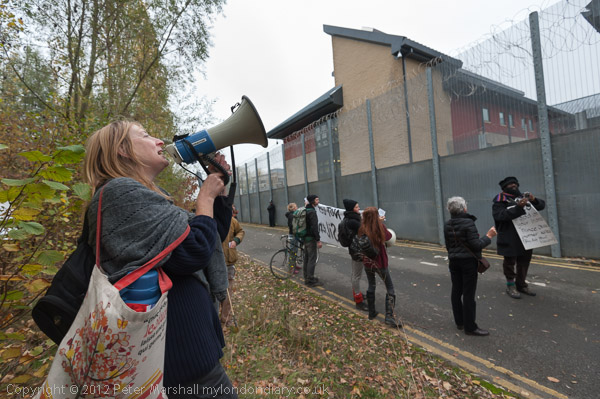
Statements from other Ghanian detainees at the site alleged that Fusu had sustained massive blows from one officer who has later asked to change his “blood stained clothes so that no one would notice what happened” and that the officer concerned is now on leave “in order to pervert the course of justice“. There appears to have been no proper police investigation of his death.
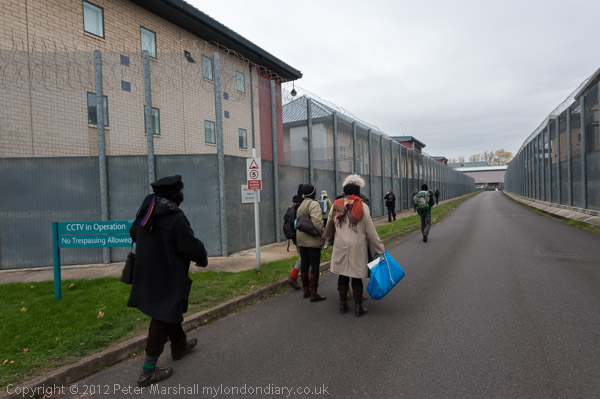
The protesters walked down the private road leading to a BT facility which runs between the Harmondsworth and Colnbrook Detention Centres just north of Heathrow airport, ignoring a sign stating “No Tresspassers Allowed‘ with a banner ‘We will NOT let this death be Silenced‘ and made their presence obvious to the men imprisoned inside with a megaphone and some loud shouting.
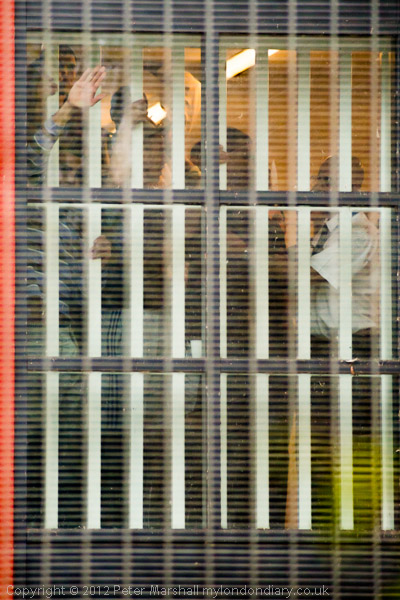
The detention centres are surrounded by 20ft high stout metal fences, the lower half with metal sheeting and the top 10ft of a heavy metal gauze. Through this those on the upper floors of the centre could see the protest and we could see rather shadowy shapes watching us below, and could hear some shouting and people banging on the bars of the window as guards tried to stop them.
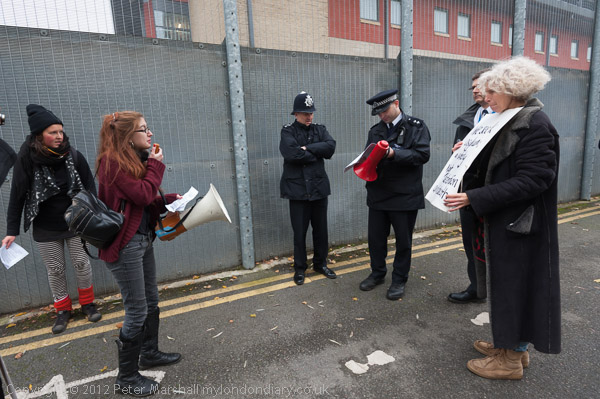
I walked with the protesters around the Harmondsworth site, watched by police and G4S security staff. When some protesters began kicking and stamping on the metal fence to make a noise, police and G4S security came to tell them they must stop and leave the site.
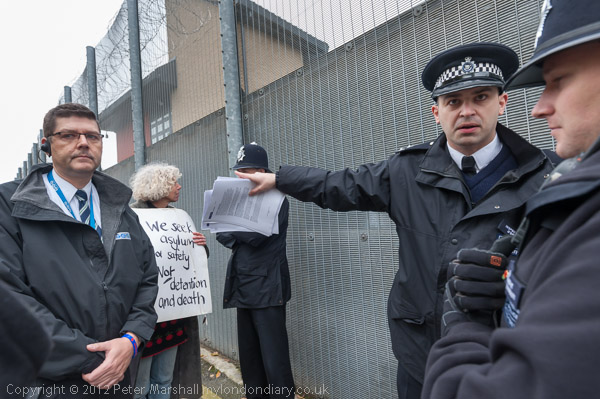
The police officer in charge read a notice charging the protesters with aggravated trespass and warning them that unless they left the site now they would be arrested, and that they were banned from returning withing 3 months. The protesters decided to leave rather than be arrested, and very slowly left the site.
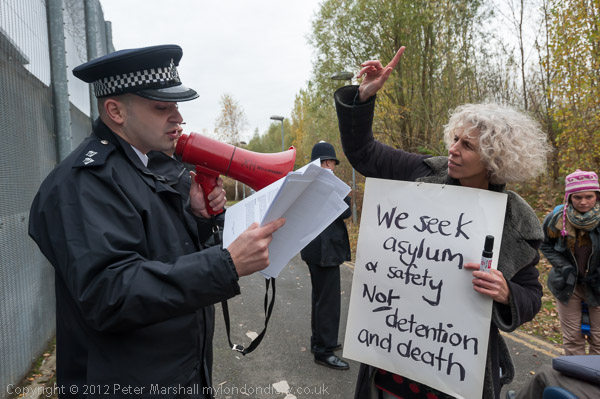
As so often in cases involving custody deaths, the inquest was long delayed and only concluded around seven and a half years after Fusu’s death. It concluded that his death had been contributed to by neglect and multiple serious failures by the Home Office, GEO who were running the detention centre when he died, Primecare who were responsible for healthcare services, doctors and everyone else involved.
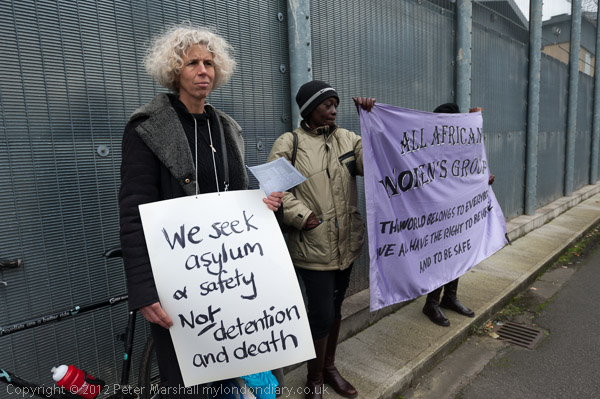
Deborah Coles, Director of INQUEST, said: “It is unconscionable that someone entrusted to the care of the state can die in this way. The jury have delivered a damning indictment of all of those responsible. Prince was failed at every level, by individuals and agencies who owed him a duty of care. He was treated in dehumanising way and as a discipline problem rather than as a seriously unwell man in need of compassion and medical care.
“His death comes as a direct result of the UK’s hostile immigration policies. This reinforced a toxic culture of indifference and neglect, where professionals who came into contact with Prince were simply unable to see the human being before them.”
No criminal charges have been taken against any of the companies or individuals involved in Fusu’s death. The CPS took years to decline to bring any charges of corporate manslaughter. After deciding to bring lesser charges under the Health & Safety Act 1974, they then reversed that decision.
More pictures at Noisy Demo after Immigration Death.
Truth, Justice and the American way? – US Embassy, Grosvenor Square
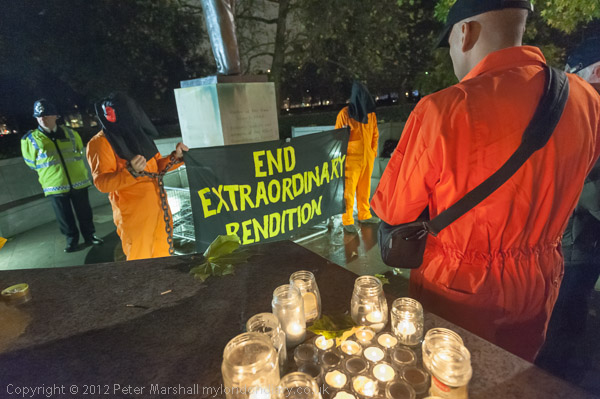
On US Election night the London Guantánamo Campaign hosted a protest outside the US Embassy at which various organisations raised human rights concerns about prisoners in the USA.
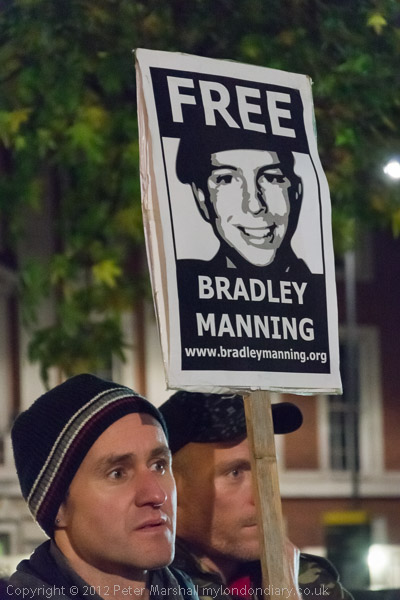
Among the other organisations with speakers at the event were Stop the War, tne Green Party, Save Shaker Aamer Campaign, Free Talha Campaign, Cageprisoners and more and there were also some performers between the speeches. And thre was a silence with candles being lit to remember the many who have been killed.
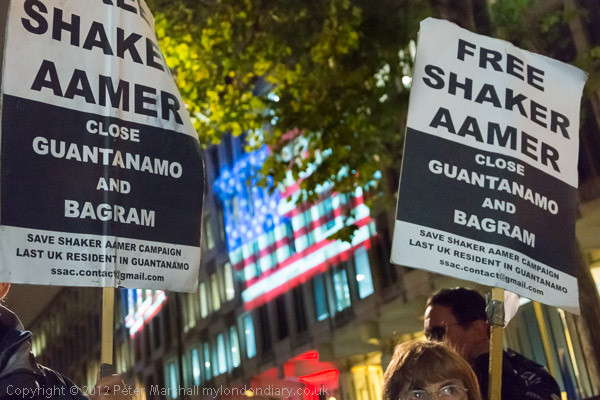
The protesters gathered around the statue of former president Eisenhower to one side of the Embassy frontage, which was being lit up for election eve with a laser projections of the stars and stripes.
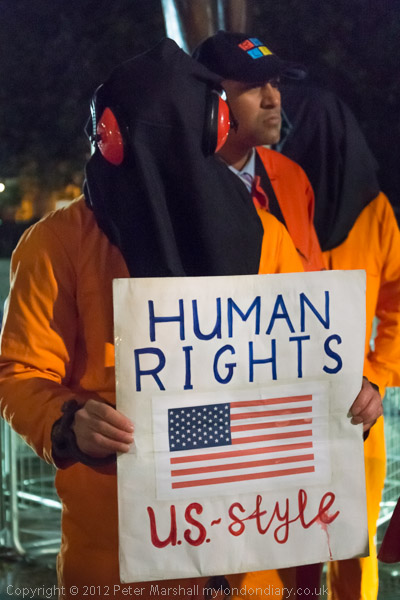
The speakers highlighted shameful human rights abuses being carried out by the USA, particularly at Guantanamo, and called for whoever was elected President to close the prison camp and end the unlawful practice of extraordinary rendition. There were also those calling for the release of Bradley (later Chelsea) Manning, the whistle-blower jailed for releasing details of US war crimes.
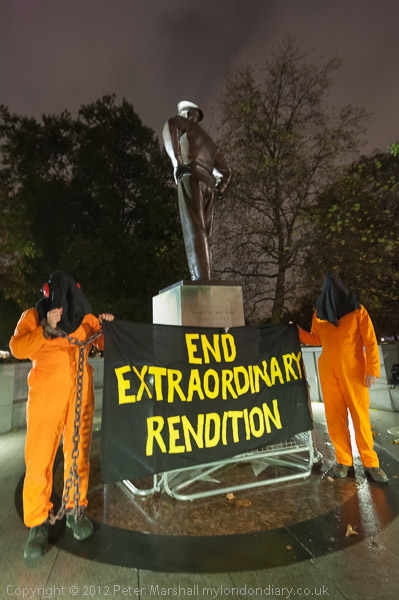
Aisha Maniar, organiser for the London Guantánamo Campaign, said: “Four years ago, a new American president, Barack Obama, promised the world a change it could believe in. One change he put his name to in writing was the closure of Guantánamo Bay and the end of military tribunals there. That has not materialised; the American administration has added drone attacks to its repertoire of extralegal activity, expanded the scope of arbitrary detention without charge or trial, and over 160 prisoners remain at Guantánamo Bay after almost 11 years, including British resident Shaker Aamer.”
More at Truth, Justice and the American way?
